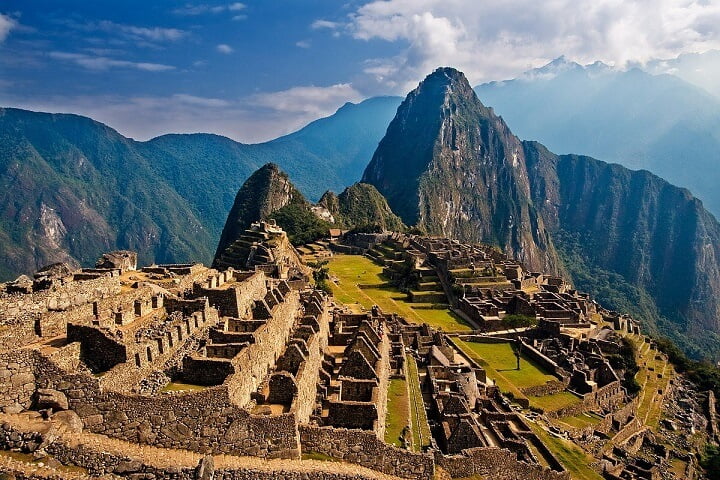
We May Have Been Calling Machu Picchu The Wrong Name For Over 100 Years
Wait, what?
By Carly Cassella | Science Alert
One of the most famous archaeological sites in the world may be named after a simple misunderstanding.
The ancient Inca city we know as ‘Machu Picchu‘ should probably be called ‘Picchu’ or ‘Huayna Picchu‘, according to a new analysis of historical documents.
In 1911, when the White American historian and explorer, Hiram Bingham, was first led to the ancient Inca ruins, he asked a local landowner to write down the name of the site in his field journal.
In the middle of the page, the local farmer, named Melchor Arteaga, wrote ‘Macho Pischo’, a word Hiram noted sounded more like ‘pecchu’ when spoken aloud.
From then on, the name stuck. For more than a century, the world has repeated this title time and time again, on maps, in documents and in history books. Only in the 1990s did some experts second-guess the moniker.
- Adam’s Calendar: A 300,000-Year-Old Alien Site In Africa?
- The Hidden River of Mercury At Teotihuacan: Path To The Royal Tombs?
In the early 20th century, the Inca ruins of Machu Picchu were not known by many locals in the Cusco region. The mountains on either side of the long-lost city, however, were very well known.
The small and steep peak behind the ruins in most photos is called ‘Huayna Picchu’, whereas the larger, sloped peak to the south is called ‘Machu Picchu’.

Above: Aerial view of Machu Picchu, tucked between Huayna Picchu mountain and Machu Picchu mountain.
When Bingham was gathering intel before setting out on his exploration, his journals recall a conversation with Adolfo Quevedo, a leader of a nearby town, who referred to the ruins as ‘Huayna Picchu’.
A few days later, a local farmer approached Bingham’s party and reported that there were some ruins called ‘Huayna Picchu‘ nearby. There were also other ruins, he said, on the summit of Machu Picchu mountain, although these turned out to be much smaller in scope than the ones that sit closer to Huayna Picchu.
Later, Bingham wrote ‘Maccu Piccu, Huayna Pichu‘ in his journal to refer to the site. Only after Arteaga scribbled down the now famous name in response to Bingham’s questioning did Bingham settle on ‘Machu Picchu‘ for good. But perhaps Arteaga was not referencing the ruins of Huayna Picchu, but the ruins on Machu Picchu.
“From his field notes and his letter, it appears that in calling the ruined city Machu Picchu, Bingham was following the information provided by Melchor Arteaga,” write the authors of the new analysis.
“Since Mr. Arteaga lived at the base of the mountain and had visited the ruins before, and even climbed Huayna Picchu, there was no reason for Bingham to question the name, even though in an earlier conversation, held in the town of Urubamba, the ruins were specifically called Huayna Picchu.”
Even before Bingham began his journey, an Inca town called ‘Huayna Picchu’ is referenced on a 1904 atlas created by another explorer.
Looking further back to documents from Spanish settlers, there are several other sources that mention the town of Picchu or the ancient town of Huayna Picchu. Meanwhile, there is absolutely no reference to a city called ‘Machu Picchu‘.
“[W]hile negative evidence is never as fulfilling, it is intriguing that we know of no reference to an Inca city called Machu Picchu before news of Bingham’s visit exploded across the world in 1912,” the researchers write.
In 1990, the Andean scholar, John Rowe, was the first to use archival documents to argue that ‘Machu Picchu’ was a misnomer.
- Sigiriya: Ancient Rock Fortress of Sri Lanka
- Traces of An Ancient Human Culture From 40,000 Years Ago Unearthed In China
He pointed to several letters and documents from 16th century Spanish colonists that referred to an ancient Inca town known as ‘Picchu’.
The researchers behind the new study agree and disagree. They agree that ‘Machu Picchu‘ is probably a misnomer, but according to local knowledge, they say the name of the site is more likely ‘Huayna Picchu’.
Drawing on cursory conversations and events written about in Bingham’s journal, they highlight several minor observations that have been overlooked or deemed unimportant by earlier researchers.
In one journal entry, for instance, Bingham writes that “a talkative old fellow who had spent a large part of his life in prospecting for mines in the department of Cusco, said that he had seen ruins ‘finer than Choqquequirau’ at a place called Huayna Picchu”.
Several other conversations support this reference, as do earlier documents from Spanish colonists.
“In short,” the authors conclude, “while Bingham suggested that the name of the fantastic ruins that he brought to the world’s attention was ‘lost in the shadows of the past’ it is of some comfort that continued research is beginning to pierce those shadows and provide insights into the name and history of that city.”
The study was published in Ñawpa Pacha.
This article was originally published by Science Alert.
